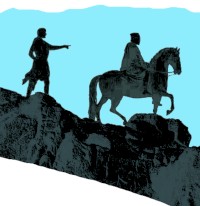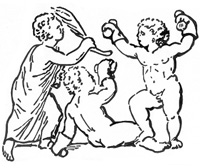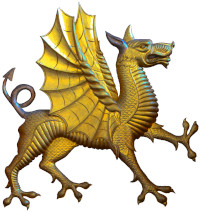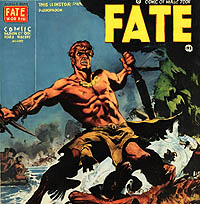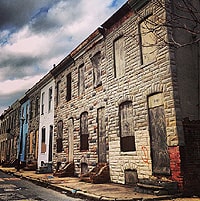Dates and weather events and immediate effects extracted from Brian Fagan’s The Little Ice Age
“The Full World” was a French concept rooted in the prosperity of the Medieval Warm Period, by which an agricultural district or nation such as France could be self-sufficient in all things short of the avarice of its elite. With population levels arrived at through such Plenty, a reverse in bountiful weather encouraged migrations [forced and voluntary] and large scale slavery. While British islanders were rounded up and shipped off to The Plantation in times of dearth, the French died in place and eventually revolted. Below are some dates that bore on the nations who provided invaders and slaves for North America and/or also may have affected the character of life in Plantation America, down to the final note.
PAN stands for Plantation America Notation
Note that all modern academics and historians I have read, as well as the author of the Little Ice Age himself, Brain Fagan, deny categorically that climate has any decisive effect on history. The mantra of “man moves climate” instead of climate moves man, is as old as modern thought and goes against all that the ancients taught from antiquity through the death of the middle ages.
1200: Dutch storm surges kill thousands
1212-19: Dutch storm surges kill thousands
1215: cold-based famines in Eastern Europe
1245: the average life expectancy of a farm worker who survived childhood diseases was 24 years
PAN: The typical term of service for a European sold into slavery was marked at 7 years, specifically so that the master could work the servant to death and not have to provide clothing or tools for the freedman, who, after attaining age 18 and being sold for 7 years, would usually be dead by his scheduled release. Surveys in 1625 and 27 by English census takers in Virginia would confirm that only 5% of slaves survived their seven years. Such a sentence almost guarantees death in bondage for an agricultural laborer and at once absolves the master of the burden of providing for disabled farm hands.
1258: volcanic eruption mark the begin of a cooling trend and the end of cathedral building
1287: “a bad ice year” in Iceland causes famine, Dutch storm surges kill thousands
1302: In Flanders, enforcement of feudal will over townsmen is hampered by increasingly wet conditions, bogging down horsemen
1309-10: exceeding cold across the British Isles
1315-19: The Deluge also known as The Great Hunger, by which rain battered grain crops and starved the world. Read Chronicle of Malmesbury
PAN: most family farms failed across Europe, resulting in the scaling up of agriculture, the reduction of working class self-sustainability in the creation of a wealthy peasant elite outside the nobility, dedicated to exploiting the landless laborer and maintaining his disenfranchisement. Cannibalism in the countryside and in jails are denied by academics but were claimed as common by contemporaries.
1322: coldest winter in memory
1324-29: Great Famine accompanied by massive rains
1337: Hundred Years War begins
PAN: establishes the English tradition of relying on farmer-soldiers to win wars under aristocratic command, with the significant iterations of this to be found in Bacon’s Rebellion, The America Revolution and the American Civil War, all being fought on this demographic basis with the farmer of European descent with a black powder weapon in his hand, being the slave soldier [conscript] or [volunteer] foot soldier of choice, as specifically designated in the Articles of Confederation.
1341: Norse in Greenland under Inuit attack
1348: black death or plague wipes out a third of Europe
PAN: poor laws specifically meant to keep the reduced labor pool on elite lands as slaves are enacted. In later times, these same laws will be used to round up and sell and otherwise cull excess laborers for transport to The Plantations.
1350: Greenland Norse disappear, abandoning their colony due to encroaching ice
PAN: the Norse either died at sea or made it to North America where Iron Hearths and Norse-style longhouses have been found, possibly accounting for the genetic similarity noted by early explorers
1351: black death abates
1362: “The Great Mandrake” storms drown 25,000 and more in Denmark
1399-1403: wetter and colder
1400: increasingly stormy seas
1406: famine
1412: English fishermen start migrating into the Atlantic
1413: Scottish town of Forvie buried under a sand dune
1415: Agincourt is the last in a long line of defeats of feudal cavalry in wet conditions
1419: 25 English boats wrecked on Iceland coast
PAN: Christopher Columbus would be wrecked on the Icelandic coast where he would hear about North America where the fish had fled the cold
1421: 100,000 die in North Sea storms, famine
1432: famine
1433: famine
1437: famine
1439: famine
1446: 100,000 die in North Sea storms
1450: cod fishing and whaling has moved to the coast of North America. Largely exploited by Basques, possibly accounting for some genetic similarity noted by explorers
1480-81: Thomas Croft and John Jay of England launch expeditions across the North Atlantic.
PAN: possible contact as such voyages were meant to establish exclusive resource access
1490s-1500s: sustained North Sea storminess drives more resource extraction and trade to North America, certainly accounting for much of the genetic similarity between explorers and natives of the 1600s Eastern Woodlands
1527-29: extreme cold and social unrest in England
1546: extreme glacial expansion in French Alps
1550: 2,000 Basque fisherman are on the coast of North America
1560: drought begins in North American south
1562: Lutheran “wrath of God” snowfall in Lepzig
1565: “First Great Winter” of the Little Ice Age, Spanish colony in Santa Elena, South Carolina
PAN: The Vagabond Act in England in 1572 and the creation of the Slave Ministry in Russia in 1573 are obvious political expressions of the need to offload excess labor as chattel in a time of shortened growing seasons and hasher conditions.
1567: Breughel’s painting of the three kings visiting baby Jesus depicts snow
1570: November 11-22 extreme gales in North Sea and drowns 100,000
1570s – 1580s: Extreme European cooling
PAN: The 1572 Vagabond Act makes homelessness, pennilessness, joblessness and being masterless, felonies punishable by death or enslavement
1580: “the most terrible visitor” arctic ice, plagues Iceland according to Oddur Eienersson.
1587-88: famine in Roanoke and storms in North Sea wreck the Spanish Armada and propel the Virginia Company to ownership of the deed to Virginia, witch burnings are rampant in Europe, with witches charged with calling down bad weather. The bracket for weather inspired witch burnings is 1580-1620 in Europe
PAN: The Roanoke Colony, intentionally marooned by agents of the Virginia Company, are sold into slavery among the Indian tribes and account for some of the noted genetic similarity. Spanish move their Carolina Colony to Saint Augustine, Florida.
1589: Allalian glacier descends into the Saas valley of France
1590-1610: extreme global cooling, with 1590s coldest decade of the 1500s
1591-97: poor English harvests, with continual rain in May 1596
PAN: Is it an accident that Plantation America is born in the English consciousness in this period, with men such as Bacon discussing it, Kings of England extoling the use of overseas slave colonies where to export the poor, and the King James Bible being the crowning glory of intellectual achievement finished on the last day of these 20 years of cold, a document in which the kinder term “servant” is inserted to soften the hammer blow of enslavement. Henceforth, all those pleased with the institution of European slavery in America will use the term servant and all those against the institution of European slavery in America will use the term slave to describe their cruel lot. This will extend to the habit of African Americans in the fields calling themselves slaves and those in the Big House calling themselves servants, a reflection of the fact that Africans were first brought in to the English Plantations to displace European slaves out of the household and into the fields.
1600: Huanyaputina erupts inPeru
1602: The Concord anchors on Cape Cod and names Martha’s Vineyard
1607: Jamestown Founded by 104 persons, frost splits trees in England
1608: Jamestown, 38 remaining
1609: Dutch found settlement on Manhattan Island
1613: Virginia/ Carolina drought ends
1618: The Thirty Years War in Germany begins.
1620: New England founded
1625: of 6,000 immigrants to Jamestown, only 1,200 survive
1630s- 1640s: drought, famine and extreme cold in China and Japan
1641: Mount Parker in Mindanao erupts depressing global temperatures through 1643
1644: third Anglo-Powhaton war in Virginia
1645: auroras are no longer seen in London skies, a sign of reduced sun spot activity
1648: The Thirty Years War ends, the German population being reduced by a third to a half. The German population will not be able to grow enough to export as slave labor until the 1690s.
1650: Enclosure acts in England make the wealthy wealthier and generate a huge homeless population, ongoing for the next 200 years, to end precisely when the Little Ice Age does.
Coincidence?
1661: famine in France
1662-64: anti-famine pamphleteers in England offer the potato as a means of feeding the poor
1664: Somerset clergyman Richard Eburne recommends shipping 16,000 poor to The Plantations annually.
PAN: Despite the above document, establishment historians continue to deny the report of a 1680 pamphleteer and child advocate that 10,000 English persons per year were being kidnapped and sold into slavery.
1665: plague kills 57,000 in London
1665/66: extreme cold winter
1666: dry hot summer in London causes the city to burn
PAN: This is a peak period for increased shipment of English children and poor to The Plantations.
1666-69: volcanic global cooling, alpine glacial maximums, extreme Scottish storms
1675: Extreme cold across Northern Hemisphere, glaciers will advance until 1850 around the world, North Sea cod fishery gone
PAN: Indian Uprisings in New England, famine in Maryland and Bacon’s Rebellion in Virginia are some of the symptoms of increased European slave shipments to North America and unrest among all races. By 1680, an estimate 10,000 abducted souls are being shipped out of England alone to The Plantations
1683/84: Ground too frozen to plough in England
1693/94: famine in France
1695: Most extreme European winter, Iceland surrounded by ice and cut off, the female servant of Daniel Defoe’s neighbor is rescued from a blown down house
PAN: coincides with maximum raiding for European slaves by Barbary Pirates and increase in shipment of all races: African, European, Chinese and East Indian, to Plantation America.
1698-99: more volcanic global cooling
1700: approximately this year, Orkney islanders off Scotland see an Inuit paddling his kayak!
1703: Daniel Defoe records extreme weather in Virginia and England in which a man and his two slaves [these are boys and boy meant slave] were blown 240 kilometers in 8 hours in a tin-hauling boat
1708/9: brutal winter in Europe except for Scotland and Ireland
1716: an aurora is once again seen in London skies after being absent since 1645
1725: coldest summer in England to date, with temperatures like winter
PAN: Large scale shipment of German and Irish slaves to Pennsylvania begin in 1727 and 1728.
1730-38: mild weather across northern hemisphere
PAN: Small numbers of runaways are recorded in Maryland records
1739: Cold and wet conditions reduce British grain harvests
1740: Starving of “urban vagrants” [victims of enclosure thefts of common lands] “swarm” in England and Scotland.
1741: Food dearths
PAN: increased levels of transshipment of European slaves to The Plantations and of runaways from, with a marked decrease in shipment of Africans to The Plantations.
1742: Brutal cold continues in the British Isles and increasing numbers of children are abducted and shipped to the Plantations in Scotland, England and Ireland, including Peter Williamson and Jemmy Annelsey in the 1740s. Hunger, disease and death by cold in the home islands do not seem to make The Plantations seem preferable, as most continue to resist economic deportation.
PAN: From this period on the poor are separated in the upper class English mind from humanity and called “the lower orders” a type of sub-Christian “thieving sort” of beast best disposed of, indicating that 200 years in to large scale enclosure of common lands that the poor had been entirely severed from their ability to feed themselves through work. This outcome is lauded by most establishment historians and modernists thinkers as “to the greater good” as it achieved economy of scale and made a large pool of labor available for industrial work, which began on the Plantation and in the work house and would continue in the factory and the mines. The large population of convict labor sent to The Plantations did enable Britain to defeat the French in the French and Indian War, but it may also have stressed the fabric of Plantation America to the point where the Revolution of the Plantation Elite became inevitable as a class control mechanism.
1776-83: harsh winters
PAN: The experiences of General Washington executing freezing soldiers for desertion in Valley Forge and crossing an ice-choked Delaware reflect the brutal climatic conditions of the age.
1785: Laki eruption in Iceland causes cool summer
1787-88: Bread riots and homeless mobs in France triggered by climatic dearth propels the French towards Revolution.
1789: French Revolution is triggered by famine, “The Great Fear” and a bad winter
PAN: The success of this process and the birth of the African ethno-state in Haiti would cause considerable unrest in the Southern United States. The French Revolution in San Domingo particularly encourages Planation Unrest in the Mississippi Watershed
1791: extreme winter in England
1815: April 11, Mount Tambora erupts in Java
1816: Year without a summer or “eighteen-hundred and froze to death” caused by Mount Tambora, triggering Summer snowfalls in Plantation America and migrations into the Ohio Country and beyond out of New England
PAN: runaway rewards for whites plummets to 6 cents. British slave sailors are discharged without relief and die in droves of exposure and starvation in September
1830: According to journalist William Cobbett in Rural Rides the English countryside was a place of starvation, where only 10% of farms were worked by owners. According to Fagan, a modernist, the British laborer of the early 1800s was less well fed and more oppressed than “modern third world subsistence farmers.”
1847-8: British engineered food removal combined with potato famine in Ireland is the last tragic act of The Little Ice Age, reducing the population from 8,175,124 in 1841 to 6,552,385 in 1851.
PAN: Plantation Economics are faltering terminally, as noted in Hinton Rowen Helper’s Impending Crisis of the South penned in 1850-57, with slave-based economy no longer efficient to provide sustainable agriculture. The Irish refugees to America would not be purchased as of old, but would be impressed into military service in the coming Civil War, serve the state as criminals and police officers and be used as low wage laborers to do tasks too dangerous for the remaining and wildly expensive negro slaves.


